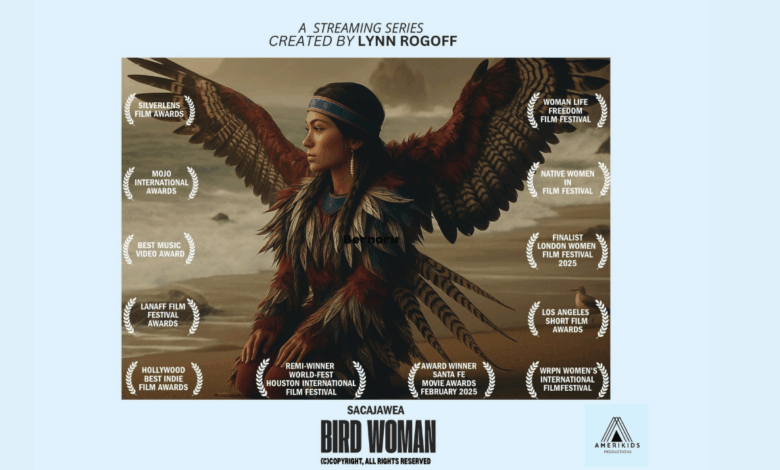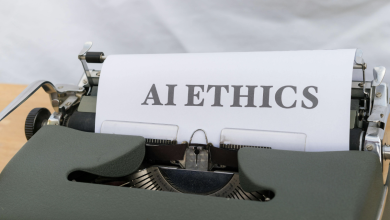
AI is no longer just a tool for tech labs—it’s reshaping how stories are told, lessons are taught, and audiences are engaged. For creative industries, the real question isn’t whether to use AI, but how to do it responsibly, ethically, and at scale. At Amerikids Productions, we’ve been exploring exactly that through our multi-part, award-winning series Bird Woman: Sacajawea. The series blends historical authenticity with imaginative storytelling, showing how AI video can expand creative possibilities without replacing the human creative team’s insights that drive truly resonant work.
The series—which has won multiple awards at international festivals (Awards & Recognition) and now streams on Xumo and Red Nation Channel—uses AI video-generating tools to reimagine history while honoring authenticity. It follows Sacajawea, the Native guide to Lewis and Clark, through a hybrid of magical realism and early 1800s history.
From Early AI Tools to Next-Gen Platforms
After years of human research and writing of the series scripts, we began developing the Bird Woman films, our production pipeline relied heavily on MidJourney, Runway, and D-ID. MidJourney gave us painterly iconography evocative of the early 1800s. Runway animated static images into motion. D-ID added emotion and movement to our characters’ faces, while letting us input our human actors’ voices and prototype AI-powered character chatbots for education and audience engagement.
At that time, D-ID Runway and MidJourney were limited in character motions. Yet these tools allowed us to scale faster than traditional animation would have permitted. We produced our 54-minute first episode (Episode 1 Private Screener, Episodes 1–3 Trailer) at a fraction of the cost of conventional workflows, while still earning accolades at festivals worldwide.
Today, the evolution continues. Platforms like Google Veo and OpenAI’s Sora are pushing beyond short, stylized clips toward long-form, coherent video generation. Episodes Two and Three, (Episodes 1–3 Trailer) currently in development, focus more deeply on these AI video capabilities—Veo, Runway, and Sora—while continuing to build from our original MidJourney characters. These episodes are already serving as a model for how future AI-native series can be produced, demonstrating both the creative potential and blueprint for next-generation storytelling. The leap from image-to-video experimentation to sustained narrative video is narrowing. Scaling requires us to design our images and prompts where human actors, writers, directors, editors, historians, musicians and composers remain the core creative force, shaping these machine outputs into stories that resonate.
Operationalizing Ethical AI in Storytelling
Scaling AI requires more than technical innovation. It requires embedding ethics directly into the pipeline. For us, that meant:
- Grounding in cultural authenticity. We drew from early 1800s Native iconography and historical sources to guide our design choices. This was not just a technical matter but an ethical one—representation matters.
- Keeping humans in the loop. AI never replaces our actors, musicians, or writers. It expands what we can prototype and visualize, but human creativity remains at the core of authorship and performance.
- Extending into education and marketing. By turning our characters into interactive chatbots using D-ID and our own voice input, we ensure that the same technology advancing entertainment also deepens engagement and learning.
Scaling Creative AI video and Chatbots in Practice
The challenge in scaling AI projects lies in moving from isolated experiments to reproducible, reliable pipelines. That means:
- Defining Values and Objectives Early: Even as tools improve, ethical frameworks must be built into production to ensure historical accuracy and cultural sensitivity.
- Iterating on Workflows: MidJourney outputs might inspire an initial visual palette, but Runway or Veo can translate those into motion. D-ID can prototype interactivity, while new platforms like Sora promise continuity across longer story arcs.
- Leveraging Interactivity: With grants from D-id and NYIT, our middle school tested chatbots show how AI-generated characters can scale beyond film into EdTech, allowing students and audiences to “converse” with historical figures.
This is not our first experiment with scaling technology into an evergreen educational product. Decades earlier, Amerikids Productions launched the Pony Express Rider Game with McGraw-Hill Home Interactive. It pioneered the mix of full-motion video and graphic ultra-matting to give audiences edutainment; interactive historical storytelling for the home market and the classroom, laying the groundwork for today’s AI-driven engagement tools. That precedent strengthens our conviction: scaling innovation requires both technological vision and educational purpose.
Recognition and Impact
This hybrid approach has already gained wide recognition. Bird Woman: Sacajawea has won twelve international film festivals, including Best Animation, Best Heritage/Historical Impact Award, and Best Western (Awards & Recognition).
Audiences can explore the trailer and cast, stream the multi-part series, or watch a private screener of Episode 1. The project has been reviewed for both its pioneering film making impact and its Chatbot’s unique value proposition. The series has been featured across, Roku, Xumo, and Red Nation Channel, proving that scaling AI storytelling can also mean scaling distribution.
Looking Forward
Bird Woman Sacajawea is not just an artistic project but a testbed for how AI tools evolve from novelty to production standard. The jump from MidJourney stills to Veo’s long-form video is as consequential as the leap from text-based learning software to immersive games like Pony Express Rider.
The future will not be AI versus humans, but AI with humans—where creators design the inputs, prompts, and guardrails, and where machines accelerate what would otherwise be impossible in time or budget.
For creative industries, operationalizing ethical AI and scaling production-ready pipelines means embracing the tools, honoring authenticity, and keeping human imagination at the center.
Learn more about Bird Woman Sacajawea and our work at Amerikids Productions:
- Website: www.amerikids.com
Storyboard for Episodes 2 & 3: View
- New Episodes 1-3 Trailer: Watch
- Series Pitch Deck: View
- Streaming on Xumo and Red Nation Channel



